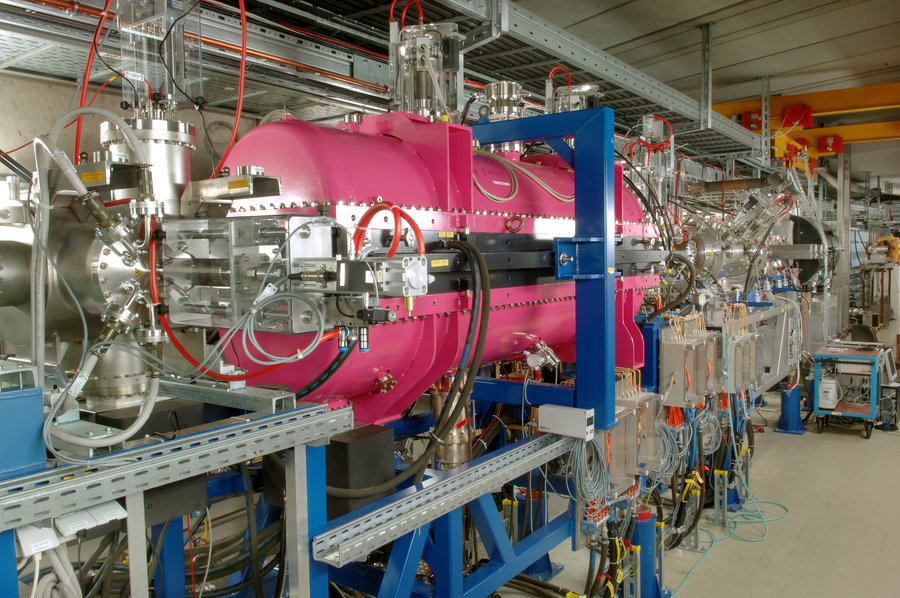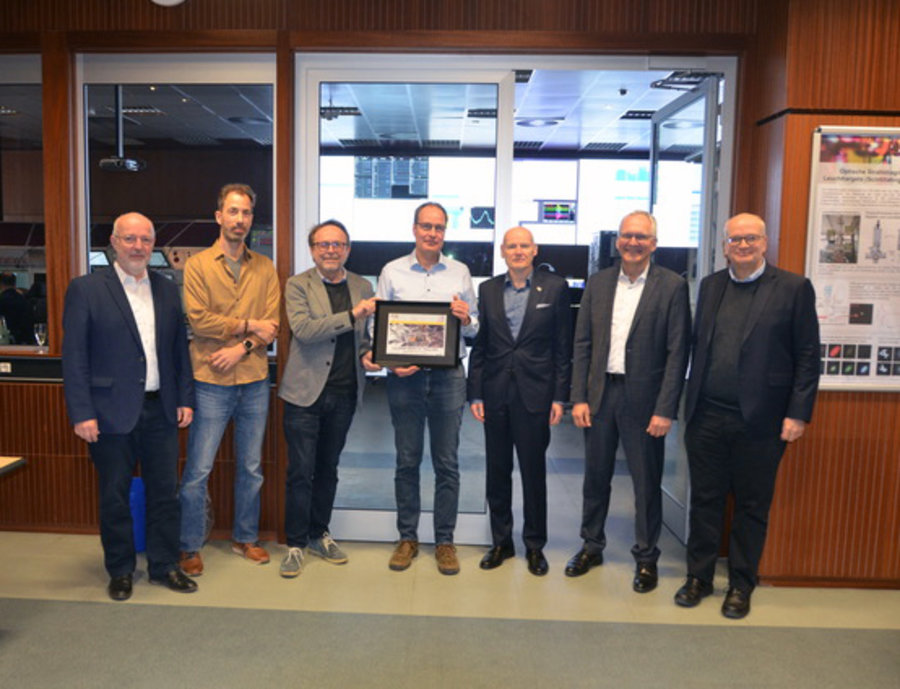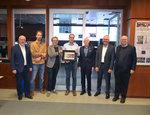First experiment with the HITRAP decelerator
19.05.2025 |
Recently, the first experiment with the new HITRAP decelerator was carried out at GSI/FAIR. The facility can be used to decelerate heavy ions with few or no electrons in order to carry out precise experiments. In this first experiment, slow, highly charged gold ions were irradiated onto a surface in order to investigate induced transformations on the surface.
GSI/FAIR designed and built a unique decelerator facility in collaboration with the Institute of Applied Physics at Goethe University Frankfurt and the Institute of Nuclear Physics at TU Darmstadt. “The first user experiment at this facility is a big step for us,” says Frank Herfurth, the project manager of HITRAP.
In order to produce highly charged ions, i.e. atomic nuclei with few to no electrons, they are first accelerated to up to 400 MeV/nucleon. They are then decelerated in two steps. First in the ESR storage ring to 4 MeV/nucleon and then in the HITRAP deceleration facility to 6 keV/nucleon, after which they are available for various experiments: On the one hand, for precision measurements of properties theoretically predicted within the framework of QED and, on the other, for very well-controlled collisions with gas molecules or solid surfaces.
“We are focusing on getting the most out of this unique accelerator concept in development and gradually transitioning to regular user operation,” says machine coordinator Zoran Andelkovic, “for example, for novel frequency standards or nuclear clocks with highly charged ions, but also as a knowledge transfer to FAIR.” (LW/LK)















